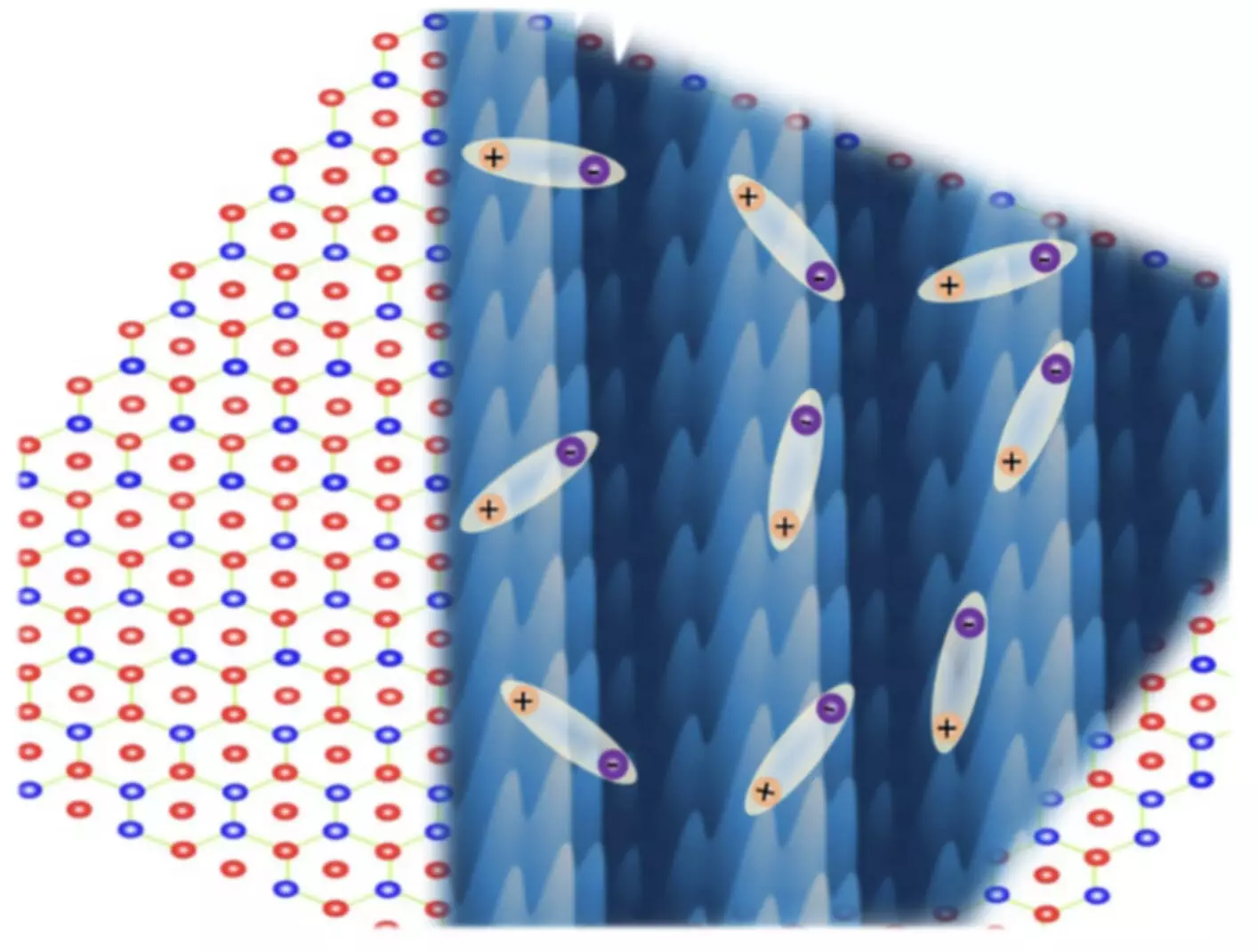The existence of charge density waves (CDW) resulting from the condensation of excitons has been a topic of interest for researchers in the field of quantum physics. This phenomenon can lead to a metal-insulator transition, creating a new quantum phase known as an excitonic insulator. Recently, a team of scientists at Shanghai Jiao Tong University and other institutes conducted a study to investigate the possibility of such a transition in the atomically thin semi-metallic material, HfTe2. Their research, outlined in a paper published in Nature Physics, shed light on potential excitonic CDW and metal-insulator transitions in this material.
Peng Chen, the corresponding author of the study, emphasized the importance of identifying the mechanisms behind the formation of CDWs in materials. Various factors, such as Fermi surface nesting and lattice distortions, can contribute to the formation of CDWs. The exclusion of alternative mechanisms is crucial in identifying the existence of an excitonic insulator. Previous studies conducted by the research team focused on other two-dimensional transition metal dichalcogenides, including TiSe2 and ZrTe2. While lattice distortion was observed in these materials, it was not the predominant driving force.
Building on their previous research, the scientists aimed to investigate the presence of CDWs and a metal-insulator transition in thin films of HfTe2. Through their observations, they successfully identified both of these phenomena. To validate their findings, the team performed phonon calculations. Remarkably, these calculations demonstrated that single-layer HfTe2 did not exhibit structural instability. Furthermore, Raman and X-ray diffraction measurements did not reveal any significant lattice distortions. This provided compelling evidence for the electronic origin of the metal-insulator transition in single-layer HfTe2.
Exciton condensation is known to be sensitive to carrier concentration near the Fermi surface. According to Peng Chen, a balanced concentration of both n-type and p-type carriers along with a small number of carriers can benefit exciton condensation. Another interesting finding was that a small amount of n-type doping increased the transition temperature of single-layer HfTe2. This contrasts with other types of transition mechanisms like Peierls-type CDW.
The recent discoveries made by Peng and his team suggest that atomically thin HfTe2 could be the first excitonic insulator with a purely electronic transition origin in a natural solid. The researchers confirmed their results through various calculations and analyses. By reducing the material dimensionality, the screening effects around the Fermi level were decreased, making exciton condensation more favorable. The team successfully prepared single-layer and multi-layer HfTe2 thin films using molecular beam epitaxy. Angle-resolved photoemission spectroscopy measurements revealed a metal-insulator transition when the thickness was less than three layers. At low temperatures, the valence band top exhibited a flat band, leading to a gap near the Fermi surface. Additionally, folded bands appeared near a specific point, a characteristic feature of CDW formation.
The discovery of this excitonic insulator lays the groundwork for future studies exploring the interaction between excitonic insulating states and other ordering phenomena such as topology and spin-correlated states. In their future work, Peng and his colleagues plan to delve deeper into the quantum insulator phase they observed in order to gain a better understanding of its underlying physics. Excitons, with their larger binding energy, are more conducive to condensation at higher temperatures compared to traditional Cooper pairs in superconductors. Therefore, the study of excitonic insulators holds great importance in comprehending phenomena like high-temperature superconductivity and superfluidity.
The investigation into excitonic insulators in atomically thin materials, specifically HfTe2, has provided valuable insights into the metal-insulator transition and CDW formations. The absence of lattice distortions and the electronic origin of the observed transition highlight the unique properties of HfTe2. This research serves as a foundation for future explorations of excitonic insulating states and their interactions with other ordering phenomena. With further advancements in this field of study, scientists may uncover new understandings of high-temperature superconductivity and superfluidity, leading to groundbreaking applications in the world of quantum physics.


Leave a Reply